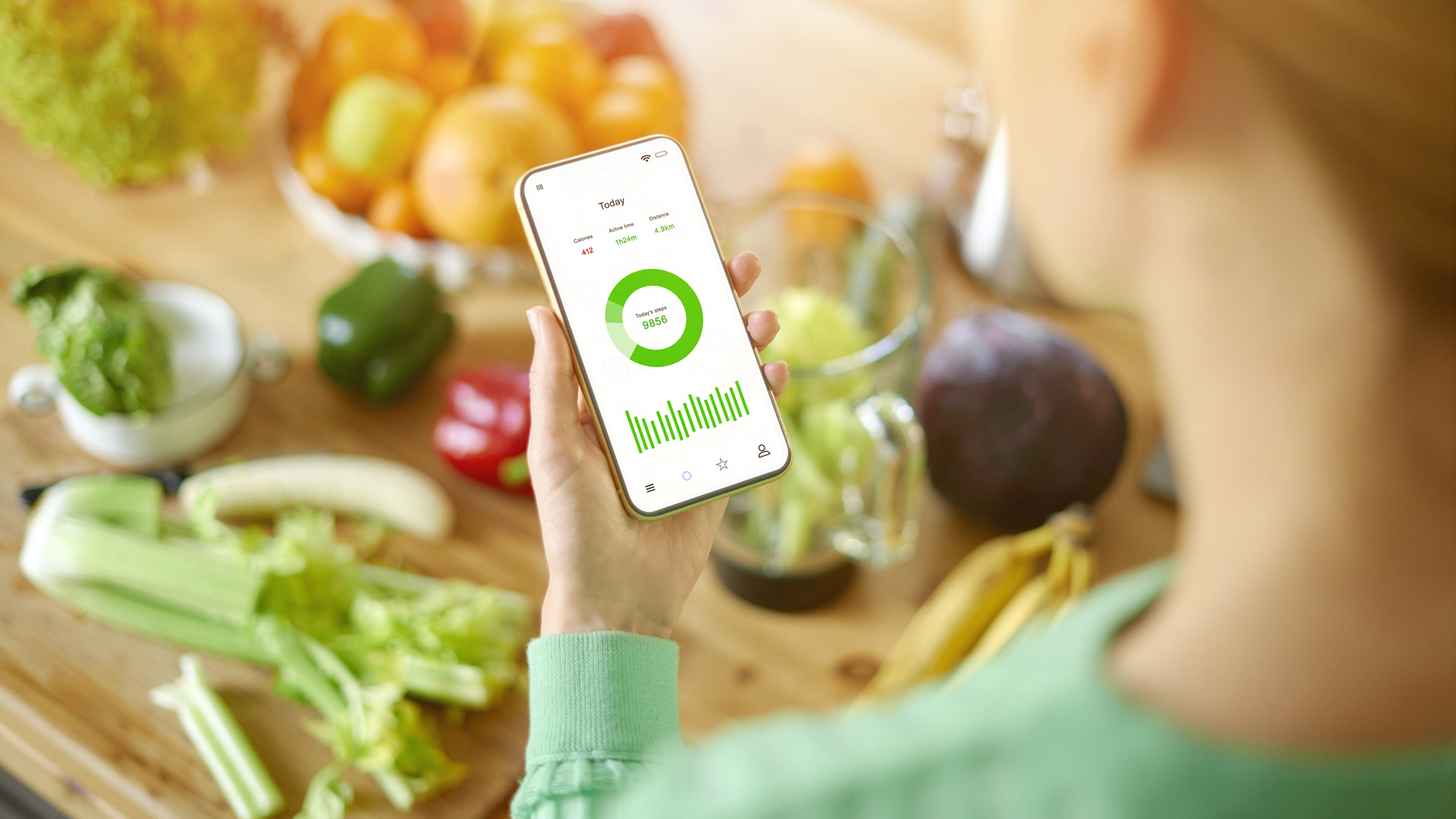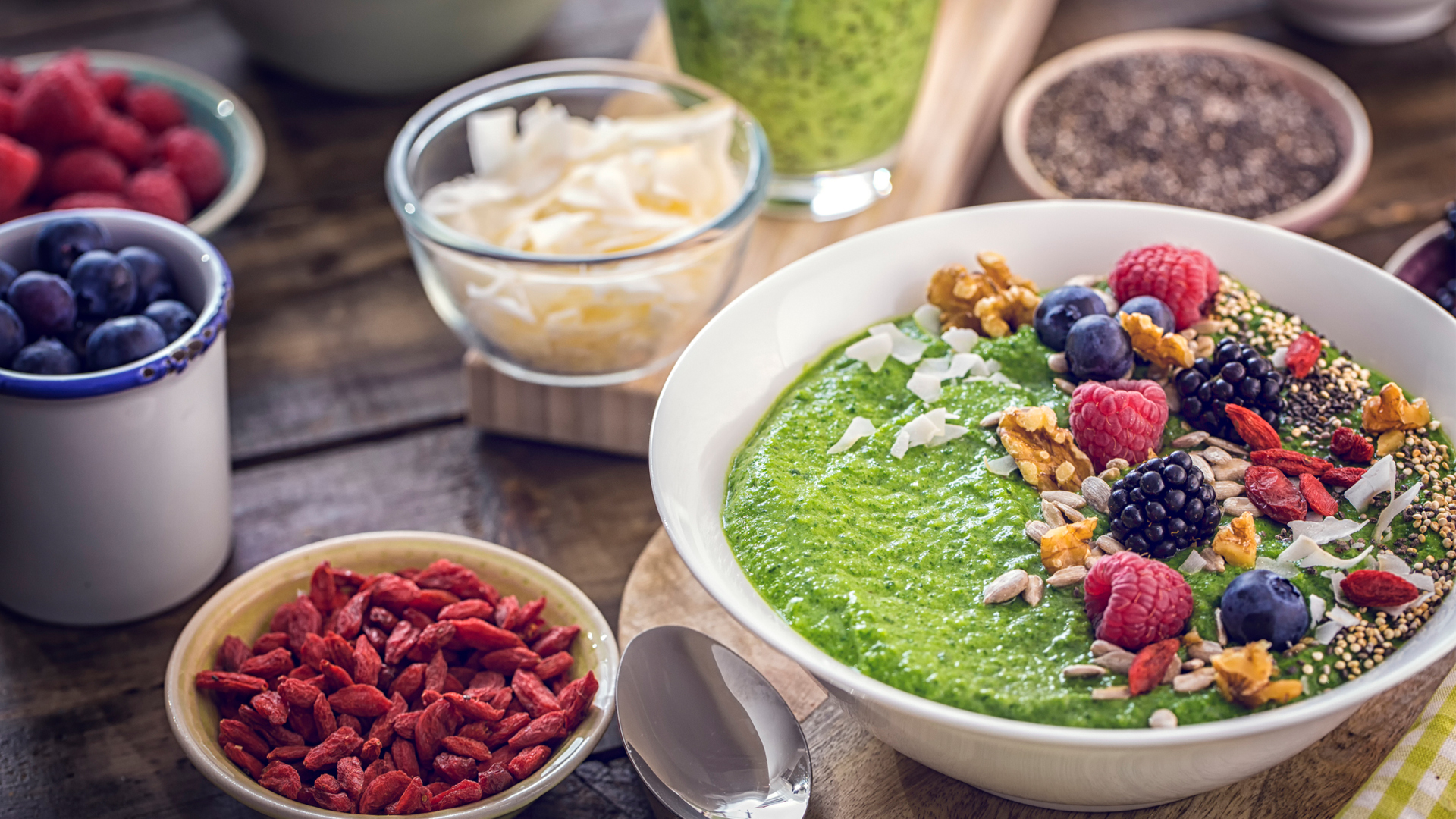The raw food diet may seem like an extreme way to eat, but many people believe that it is better for your health than consuming foods that have been processed or cooked. The general rule is that for food to be truly ‘raw’ it cannot be heated above 104–118°F (40–48°C).
The theory behind the raw food diet is that through processing, food loses valuable nutrients, so by eating raw we can get the most out of our meals. However, while some vitamins can leach when heated in water or fat, alternative cooking methods can help reduce this nutrient loss, so is eating completely raw meals really necessary?
Here, we explore what foods you can eat on the raw food diet and if it actually has any health benefits. We also spoke to some experts to get their opinions on raw eating, and whether the raw food diet is safe for everyone.
On any diet, it’s important to stay hydrated. Make sure to check out our round-up of the best water bottles to sip on throughout the day.
What is the raw food diet?
Often combined with veganism, the raw food diet focuses on foods that have not been cooked or processed with heat. You can eat raw meat, dairy, fish and eggs as a part of the raw food diet, but caution is recommended as there is a risk of food poisoning when consuming raw animal products. Refined and heavily processed foods are discouraged on the raw food diet, although dried or dehydrated foods are sometimes ok if they do not exceed 104–118°F (40–48°C) in the drying process.
Dr. Deborah Lee, of Dr Fox Online Pharmacy (opens in new tab), tells LiveScience: “The raw food diet was first created back in the 1800s, when nutritionist Oskar Bircher-Benner reported that eating raw apples had cured his jaundice. He then opened a clinic to teach the importance of eating raw foods. The key principle of the raw food diet is to only eat food that has not been cooked at temperatures of over 104-118°F (40–48°C). Food has to be as natural as possible, so it must not be refined, preserved, processed, pasteurized, or treated with pesticides.”

A study in the International Journal of Gastronomy and Food Science (opens in new tab) found that cooking methods can change the amount of nutrients lost through processing. This study also found that heating is not the only way to potentially alter the nutritional quality of food, and that cutting, washing and freezing all influence how food retains vitamins as well. As the raw food diet allows blending and freezing, it seems that some degree of degradation through processing is acceptable.
Additionally, some processing actually increases the nutritional value of certain foods, according to a study in the Journal of Agricultural and Food Chemistry (opens in new tab). This study found that fruit and vegetables can retain their antioxidant properties, despite losing some vitamin C to cooking and can actually increase the bioavailability of certain nutrients.
Another aspect of the raw food diet is the belief that the digestive enzymes naturally occuring in some foods, such as avocado or pineapple, make the foods healthier and easier to digest when not destroyed by the cooking process. Cooking food denatures these enzymes, changing their shape so they cannot function. However, we make lots of enzymes in our own digestive systems, according to a study in Physiological Reviews (opens in new tab), which do the work of extracting nutrients from our food.
What can you eat on a raw food diet?
- Raw fruits
- Raw vegetables
- Unprocessed nuts and seeds
- Nut milks
- Raw nut butters
- Sprouted/soaked legumes and grains
- Dried fruits and meats
- Cold-pressed olive and coconut oils
- Fermented foods like kimchi and sauerkraut
Food to avoid
- Cooked fruits, vegetables, meats and grains
- Refined sugars and flour
- Coffee and tea
- Alcohol
- Roasted nuts and seeds
- Refined oil
- Pasteurized juices and dairylist
Health benefits
Abi Rodgers, nutritionist at The Gut Co (opens in new tab), mentions that the raw diet can carry some health benefits. “There can be health benefits when eating well on a raw food diet including a lower risk of heart disease, diabetes and obesity,” she says. “Although you risk being deficient in some nutrients, you will likely have far more of some nutrients due to eating a larger portion of fruits and vegetables. Studies have shown vegan diets, including raw diets, often contain more fiber, antioxidants and beneficial plant compounds which all have a great impact on the gut.”
Minimal processing
A review in the Nutrients (opens in new tab) journal indicated that eating ultra processed foods can be associated with at least one or more negative health outcomes, including obesity, cardio-metabolic risks, cancer, type-2 diabetes, cardiovascular diseases, irritable bowel syndrome, and depression. As the raw food diet discourages all but very minimal processing, there may be some health benefits associated with consuming your meals raw.
High in fiber
Dietary fiber is essential for good digestion and gut health, and the raw food diet provides this nutrient in abundance. Cooking does not reduce the amount of fiber in foods, so it isn’t the low-heat component of the raw food diet that makes it high in fiber, but rather the amount of fruit and vegetables you are encouraged to eat.

Is the raw food diet safe?
Rodgers tells us that the raw food diet is unsuitable for children. “It is not recommended that children partake in a raw diet. Our brains need a lot of energy to grow and develop, so limiting calories and the diversity of nutrients, it’s suggested, could have a negative impact on children’s development. It is extremely important to do your research at any age if you want to change to a raw diet to make sure you are going to be getting all the nutrients you need to survive and thrive.”
Rodgers also mentions that there are some foods that should never be eaten raw. “It is important to only eat foods that are safe to eat when raw. Eating raw chicken, for example, is not considered safe as it can be contaminated with bacteria that are harmful to humans until cooked,” she says. “Potatoes should not be consumed raw as they contain starch, which when left uncooked can lead to digestive problems. Green potatoes can also contain the poisonous toxin solanine, which can lead to headaches and nausea when consumed by humans.
Aubergines also contain solanine, she adds, and solanine can restrict the absorption of calcium, causing a deficiency which is harmful to humans.
“Be careful with rhubarb; although the stalk is safe and edible raw, the leaves can be poisonous, leading to difficulty breathing, burning of the mouth and throat and for some, seizures. Lima beans are not safe to eat raw, due to a compound called linamarin that breaks down into cyanide. This is only present when the beans are raw, making them unsafe on a completely raw diet.”
Dr. Lee also tells us that the raw food diet can have an impact on your wellbeing beyond the physical. “Eating a large amount of organic food is expensive,” she says. “It can also make eating out very difficult and can interfere with your social life.” She also mentions it is difficult to get enough calories. “It can be hard to take in enough calories. There is also a risk of protein deficiency and nutritional deficits in important vitamins and minerals, such as vitamin B12, vitamin D, iron, and calcium. The diet is also relatively low in sodium.”
This article is for informational purposes only and is not meant to offer medical advice.
Additional resources
What is a raw foods diet and are there any risks or benefits associated with it? (opens in new tab) Journal of the Academy of Nutrition and Dietetics, 2004
Stay connected with us on social media platform for instant update click here to join our Twitter, & Facebook
We are now on Telegram. Click here to join our channel (@TechiUpdate) and stay updated with the latest Technology headlines.
For all the latest For Top Stories News Click Here
